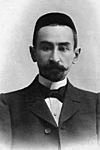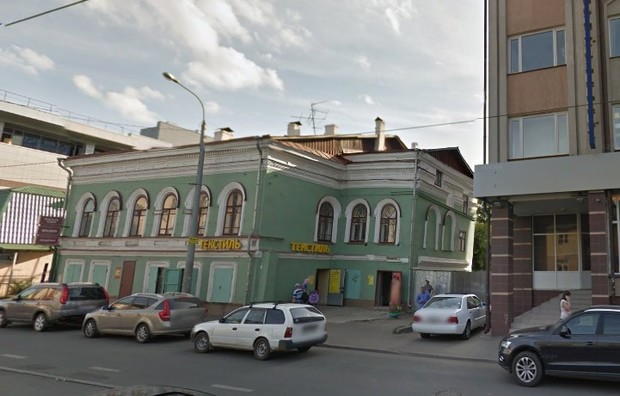Mixed marriages 100 years ago: ‘Her nature and education were very close and understandable for me’
About how the Tatars regarded the interfaith marriages in the 19-20th centuries. Part 1
Last week, social networks and Kazan media actively discussed the topic of nikah (the term for Islamic marriage) and attendant 'wedding' issues of the Tatars. A Kazan historian and columnist of Realnoe Vremya Liliya Gabdrafikova in her new column written specially for our newspaper tells about such phenomenon as mixed marriage and the attitude of the Tatar society to it.
The spread of Europeanized style of life among the Tatar bourgeois environment led to a gradual erosion of ethnoreligious boundaries. This was particularly true for the cities where the Tatars lived in the neighbourhood with other peoples. One of the results of close communication between representatives of different religions became the mixed marriages.
Noble international
Mixed marriages happened earlier, but only among the nobility. As a researcher of this issue G. Azamatova notes, in the Tevklevs noble family there were three cases of conversion to Orthodoxy, all of them were connected with matrimonial plans. At the beginning of 19th century, Salima Tevkleva got married to an Ufa nobleman I. Timashev. The story of taking Christianity of this Tatar noble woman is described in A Family Chronicle by S. Aksakov. The marriage was not long, she gave birth to two sons and died of tuberculosis three years later after that.
Tragic was the fate of other Tevkleva – Gaisha, a daughter of Shakhingarey Yusupovich. She was going to get married to a not very rich Lieutenant Gavriil Koko. Her father had already died, and her relatives were against that marriage. By the way, a blood brother of Geisha was the future mufti from Orenburg Salimgarey. On 3 September 1838, Gaisha Tavkleva accepted the Christian faith through the rite of baptism and was named Feodosya. However, she never became the wife of G. Koko. Apparently, the reason was the revealed before the wedding vested interests of the groom, who needed to improve his financial position immediately. Soon after the adoption of Orthodoxy Gaisha wrote asking to return her to the Mohammedan religion. But all attempts were unsuccessful.
For some time, newly-baptized Feodosya was even placed in the Annunciation women's monastery to protect her from the influence of relatives. G. Tevkeleva was never married, she failed to return officially to Islam as well. Could this poor mother of Gaisha — Zuleykha Tevkeleva, who until her last days was fighting for bringing back the erring daughter in Islam, know that in a few decades history would repeat itself. Her grandson — Ahmed Batyrhanovich Tevkelev, who was born in 1862, in the late 19th century tied the knot with a Russian girl. For this, he was baptized under the name of Vladimir Nikolaevich. This marriage gave them a daughter.
'I'm not a European or Asian. I stand between them …'
In a strange land, in a foreign environment, the Tatars-Muslims also sometimes entered mixed marriages. But these were isolated cases, due to the special living situations. For example, a Tatar man from Rostov-on-Don, during the Russian-Turkish war in 1877-1878 turned out to be on the territory of modern Bulgaria, got married a local woman. Between the young Bulgarian woman and the wounded soldier was born a mutual feeling. The former Russian soldier remained to live at wife's homeland. They had a son — Daniyal, who until the 1917 revolution used to come to Russia and worked on the Volga in the melon-growing farms. Daniyal's daughter and granddaughters married to Bulgarians. They profess Christianity.
In addition to marriages with Orthodox Christians, during the reform era they also entered matrimonial unions with representatives of other branches of Christianity. For example, the youngest son of a Kazan merchant Sh. Kazakov — Muhammad, married to a German woman in the 1910s. At that time he was living in Berlin, where he was sent by his father for merchant affairs and where he had a small business. The family had two children who were called Muslim names — Mahmoud and Maryam. During the war, the Kazakovs moved to Turkey.
The Europeanization of the Tatar Muslim society created a type of people who found themselves at a crossroads. Integrating into Russian society they often lost their identity. The Tatars at the beginning of the 20th century are characterized by a certain duality.
 'I'm not a European or Asian. I stand between them,' wrote a publicist Fatikh Karimi. This duality hindered them when choosing a life partner.
'I'm not a European or Asian. I stand between them,' wrote a publicist Fatikh Karimi. This duality hindered them when choosing a life partner.
During a travel around Europe, he became acquainted with a French governess. The woman was ready to marry him. What is curious, the young man was supported by the gold industry entrepreneur Shakir Rameyev (he was accompanied by F. Karimi as an interpreter). However, Fatikh changed his mind. 'Her nature and education were very close and understandable for me,' admitted 'the groom' later. It is not religious or national differences with the French woman prevented him from marriage. 'How could I bring a woman who got a good education to the society where slavery and deprivation prevail,' he noted. No one knows what interethnic and interreligious conflicts could appear due to the marriage, but some years later F. Karimi got married to a daughter of a Tatar merchant Saida.
Nikah or cohabitation?
The Tatar community condemned the mixed marriages. For example, at the beginning of 20th century, a resident of the Tatar Sloboda of Kazan, representative of the famous merchant family Ibrahim Aituganov married a Russian woman. But soon he moved to another part of the city because the coreligionists condemned his marriage. 'It is a small event, but for the Tatar youth — a black event,' said on this occasion in a private letter a writer Fatikh Amirkhan. Although the Qur'an allowed the mixed marriages, a Muslim was allowed to marry a Christian and a Jewish woman. For example, after a series of conflict situations connected with brides-Jewish, in 1898 the Orenburg Mohammedan Spiritual Assembly officially allowed the marriage of a Muslim with a Jewess. But this did not mean the approval of such marriages by the society. The still condemned the ties with the adherents of different faiths.
Marriages with Christians were strictly punishable by law and therefore were rare. But, nevertheless, the mullahs, contrary to the prohibition of such marriages by the Russian law, conducted marriages with the Christians. In 1910, in the result of the audit of the Orenburg Mohammedan Spiritual Assembly, it was revealed that the leadership of religious institutions repeatedly covered up cases of mullahs who concluded the marriages of Mohammedans and Orthodox Christians. Most likely, a merchant I. Aituganov also married according to the Muslim tradition (nikah), but under the Russian law, his marriage was considered to be a cohabitation.

For more than ten years the marriage of a representative of the famous business family from Simbirsk Governorate, a hereditary honorary citizen Yakub Akchurin and a peasant woman from the village of Silaevka of the Karsun district of the same Governorate Vasilisa Rozhdestvina was considered to be a cohabitation. In 1899, they had a daughter Alexandra. At the time of their marriage in 1910, the family had already raised six children: Alexandra, Klavdiya, Vladimir, Georgy, Elizaveta, Victor. All of them were registered as illegitimate children of V. Rozhdestvina and were baptized in the Trinity Church in the village of the Trinity Karsun County. Vasilisa and Yakub could register their marriage only by the Lutheran tradition. On 7 June 1910, they were married in the Evangelical Lutheran St. Mary's Church in Simbirsk. At the time, the 'newlyweds' were 35 years old both. The groom was recorded as a Mohammedan and the bride – of the Evangelical Lutheran confession. When adopting their own children, the couple gave a written promise that would bring up them only in the Orthodox tradition and in no way would 'seduce' to their religions. Only under these conditions, this family became legitimate.
If marriages of a Muslim man with a non-Muslim women were acceptable within the religious tradition, the marriages of a Tatar woman with representatives of different faiths were completely prohibited. Very significant is the story by Fatih Amirkhan Hayat. The daughter of a merchant Hayat falls in love with a Russian student Mikhail but finds the strength to overcome love by putting above her own faith.
To be continued